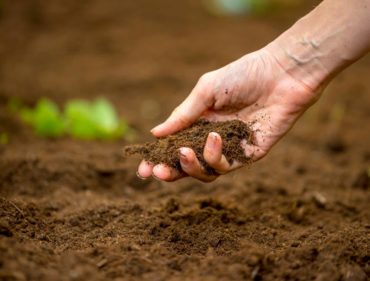 Editor’s note: These tips were adapted with permission from the brochure “Tips for Water and Rural Management for Puget Sound Rural Living” by the Puget Sound Conservation Districts, adapted from “Tips on Land and Water Management for Small Farms and Ranches in Montana,” Montana Department of Natural Resources and Conservation.
Editor’s note: These tips were adapted with permission from the brochure “Tips for Water and Rural Management for Puget Sound Rural Living” by the Puget Sound Conservation Districts, adapted from “Tips on Land and Water Management for Small Farms and Ranches in Montana,” Montana Department of Natural Resources and Conservation.
If you want to have a healthy garden where your plants thrive, you have to start with healthy soil. Educate yourself about your soil and how that impacts your plans for your property. Use these tips as a guide.
Soils vary widely, even across your property. The type of soil you have will influence:
- Amount and type of compost or fertilizer to apply
- Type and quantity of grass, crops and trees your land can produce
- How easily the soil may erode
- If the soil will filter human and animal wastes before they reach groundwater
- When to graze livestock
- Possible problems with building foundations
- Depth of tree and plant roots
Living in the soil are plant roots, bacteria, fungi, protozoa, algae, mites, nematodes, worms, ants, maggots, insects, grubs and larger animals. Soil is made of about 45 percent minerals, 25 percent water, 5 percent organic matter and 25 percent air. Soil organisms recycle organic matter back into nutrients that support plant growth.
Healthy soil has amazing water-retention capacity. Every 1 percent increase in organic matter results in as much as 25,000 gallons of available soil water per acre. Earthworm populations consume 2 tons of dry matter per acre per year, digesting and mixing it with soil.
For information about your soil type, refer to your county’s soil survey available at websoilsurvey.nrcs.usda.gov.
It can take 1,000 years to form just an inch of soil! Loss of soil happens through erosion. A raindrop is like a miniature water bomb: It hits the ground at 20 miles per hour. When raindrops hit bare soil, water can splash up to 6 feet away, carrying soil particles off the fields and into drainage ways. Wind also dislodges, moves and transports soil particles away from fields.
To protect your soil:
- Create a protective cover. A planted cover keeps soil in place. The leaves cushion the impact of wind and rain while the roots anchor the soil. Other covers, such as mulches, also protect soils.
- Establish barriers to wind and water. Barriers slow wind and water and trap eroded soils. Barriers can be as simple as grass strips, silt fences or tree or shrub windbreaks.
- In general, mulches protect slopes less than 33 percent, plants can protect slopes that are less than 50 percent, and erosion control structures like terraces may be needed for steeper slopes.
- Contour farming is when rows run “on the level” around the hill rather than up and down the slope. Crop rows form hundreds of small barriers that slow water and reduce soil loss up to 50 percent compared to farming up and down a slope.
- Cover crops temporarily protect the soil until the main crop is planted. Cover crops also add organic matter, hold nitrogen and reduce weed growth. Cereal grains and legumes are good winter cover crops. Buckwheat is a good summer cover crop. Cover crops can also be planted between rows.
- Crop rotation switches crops each year in a certain order. A rotation that includes grasses, legumes or small grains will break pest cycles and reduce erosion compared to continuous row crops.
- Utilize no-till farming to avoid disturbing the soil.
- Irrigate only when necessary: Do the “squeeze” test to determine if irrigation is necessary. Squeeze several handfuls of soil taken at 6-, 12- and 18-inch depths. If the soil stains your fingers, wait a few days and test again. If the soil feels only slightly moist or forms a slightly crumbly ball from squeezing, then it is time to irrigate.























